History
The Curtiss Model 33 was developed in September 1923 from the Curtiss R-6 race plane. The aircraft was purchased by the United States Army as PW-8 after a competition with the Boeing Model 15, which was designated PW-9. The Boeing was purchased as a main fighter.
The Curtiss P-1 Hawk was the first type in the United States Army Air Service receiving the P indicator (P = Pursuit). The P-1 was the production version of the Curtiss XPW-8B, an improved version of the PW-8 and had, at the request of the Air Service, the same type of wing as the Boeing PW-9.
The first P-1, Curtiss designation Model 34A, made its first flight in mid-August 1925 and soon several variants followed that differed primarily in engine equipment.
In March 1925 an order was received for the delivery of five P-1s equipped with the more powerful Curtiss V-1400 engine of 500 hp. These aircraft were designated XP-2. The first example of this series was modified and equipped with a turbocharger, which had been applied at the side of the nose.
However, the V-1400 did not met the expectations and it was replaced in three machines by the standard Curtiss C-1150. These aircraft were then designated as P-1.
The fifth P-2 also received another engine, a Curtiss Conqueror V-1570 and was designated as XP-6.
A total of 93 Hawks was produced in P-1 to P-1C variants. Also, 52 P-1 versions P-1D to P-1F were built. However, these types were conversions of mostly trainers like AT-4 and AT-9.
Also, a number of test aircraft were built. The P-3 was actually a P-1A equipped with a Pratt & Whitney R1340 Wasp radial engine. Initially, the intention was to equip this aircraft with the Curtiss R-1454 engine but this one proved to be to unreliable.
Four examples were built under the designation P-3A, which were mainly designed to test the engine.
Later, two of these aircraft were equipped with a Pratt & Whitney R 985-1 Wasp Junior and designated XP-21.
In 1928 five Curtiss P-5s, similar to the P-1C, but with a turbocharger, were delivered. The performance at higher elevations and the service ceiling were clearly better than that of the P-1C. However, performance at lower altitudes were less.
In total, 202 Curtiss Hawk variants were delivered.
Curtiss P-6
The first aircraft with the designation P-6 was the fourth P-2 (serial number 25-423) which was modified for the National Air Races of 1927 and was equipped with the Curtiss V-1570, later known as Conqueror. This engine was an development of the Curtiss D-12 engine.
The US Army therefore gave it the designation XP-6. This aircraft has been stripped of all military equipment and became second in the air race.
There was ordered to convert a P-1A, (Ser. No 26-295), which received a V 1570-1 Conqueror engine and the wings of the PW-8A, with radiators in the wing.
This version was given as a factory designation Model 34Q and was designated by the Army as XP-6A. This aircraft also took part in the air race of 1927 and reached the first place.
There was an order for 18 Curtiss Model 34P, army designation P-6. The first nine aircraft, serial number 29-260 t / m 29-268 had an engine that was cooled by Prestone, broadly comparable with glycol. This not only saves a lot of weight, but also reduces the radiator.
Due to delivery problems with Prestone-cooled engines, the other aircraft, serial number 29-269 were - 29-273 and 29-2 = 363 till 29-366 delivered water-cooled Curtiss V 1570-17 engines.
The rest of the series was delivered with Prestone-cooled engines, and designated as Curtiss P-6A
The P-6 was largely consistent with the P-1, but differed mainly in the more rounded hull so that it would connect to the Conqueror engine better.
Furthermore, the underside of the hull has been made deeper, so that it corresponds better to the bottom of the radiator. The suspension was adjusted and replaced by Oleo-spring system which is mounted on the front style.
Hawk I
Hawk I (or export Hawk) was the designation of the civilian and the export version of the Curtiss P-6. In 1930 a demonstration aircraft was built and usually flown by the famous aviator James Doolittle. This aircraft was known as the Doolittle Hawk.
See also the article about the Curtiss Hawk I at Avianet.eu
Versions.
Each version became heavier, causing to perform less than the previous version.
- XPW-8: Three prototypes, one was converted to XPW-8A and later to XPW-8B standard; one was converted into CO-X two seat scout.
- XPW-8A: modified prototype with new cooling system and adapted wings.
- XPW-8B: Curtiss Model 34 with modified wing as adapted to Curtiss P-1.
- PW-8: 25 examples of the production version
- P-1: Curtiss Model 34A – production version of the XPW-8B with modified rudder and some other smaller modifications and equipped with a Curtiss V-1150-1 rated 435 hp (324 kW); Ten examples built.
- P-1A: Model 34G – P-1 with extended fuselage (3 inch), larger wheels and revised fuel system; 25 examples built plus three modified P-2’s.
- XP-1A: One P-1A used for development purposes
- P-1B: Model 34I – 25 examples built in 1928, equipped with a Curtiss V-1150-3 (D-12D) engine.
- P-1C: Model 34O - 33 examples built in 1927 – 1928, equipped with a Curtiss V-1150-5 (D-12E) engine.
- XP-1C: A P-1C with a revised radiator.
- P-1D: 24 converted AT-4 trainers; equipped with a Curtiss V-1150-3 (D-12D) engine.
- P-1E: 4 converted AT-5 trainers equipped with a 328 kW Curtiss V-1150-3.
- P-1F: 24 converted (in 1929) AT-5A trainers plus one converted XP-21A; equipped with a 328 kW Curtiss V-1150-3.
- P-2: Model 34B – Five P-1s equipped with a Curtiss V-1400 rated 500 hp.
- Three of these aircraft were later converted to P-1A; another on was equipped with a Curtiss V1570 engine an designated XP-6.
- XP-3: Converted P-1A equipped with a Curtiss R-1454 radial engine rated 390 hp. later modified to XP-3A.
- XP-3A: XP-3 equipped with a Pratt & Whitney R-1340-1 radial engine rated 410 hp
- XP-21: XP-3A equipped with a Pratt & Whitney R-985 Wasp Junior radial engine.
- P-3A: Model 34N – Production version of the AT-5A, fice examples built , equipped with an Pratt & Whitney R-1340-7 radial engine rated 410 hp.
- XP-4: Modified P-1A with a turbocharged Packard 1A-1530 engine rated van 510 hp.
- XP-5: P-1A equipped with a Curtiss V-1150-3 engine rated 435 hp.
- P-5: Model 34L – production version of the XP-5, later equipped with a Curtiss D-12F engine; Four examples built.
- XAT-4: Model 34J - One P-1A equipped with a Wright-Hispano E rated 180 hp for the advanced training.
- AT-4: production version of the XAT-4, 40 examples ordered. The first 35 examples were modified in 1929 to P-1Ds with a Curtiss D-12 engine; the remaining five were finished as AT-5s.
- AT-5: Model 34J – Five modified AT-4s with a Wright J-5 rated 220 hp; later modified to P-1E.
- AT-5A: Model 34M – based upon the P-1B with an extended fuselage ; 31 examples built; later modified to P-1Fs.
- XP-6: Model 34P, modified P-1 equipped with a Curtiss V-1570-17 engine.
- XP-6A: Model 34K, as XP-6 but with different wings and wing radiators.
- P-6A 18 examples built for US Army.
- XP-6B: Modified P-1 equipped with a V-1670 engine.
- XP-6D: XP-6B, equipped with a turbocharged Curtis V-1570-C engine.
- P-6D: Modified P-6As (6 examples) in 1932 equipped with a turbocharged Curtiss V-1570-C.
- XP-6E: Model 35, also referred to as Y1P-22, built in July 1931 as prototype of the P-6E
- XP-6F: Modified XP-6E with a turbocharger and enclosed cockpit.
- P-6E: 46 examples delivered in 1931-1932
- XP-6G: A P-6E equipped with a Curtiss V-1570F engine.
- XP-6H: A P-6E with four .30 in (7.62 mm) machine guns in the wings.
- P-6S Hawk I: Three examples sold to Cuba, equipped with a450 hp Pratt & Whitney R-1340 Wasp radial engine plus one sold to Japan as Japan Hawk with a Curtiss V-1570 inverted V-engine.
| Dimensions: | |||
| Length: | 6,71 m | Wing span: | 9,60 m |
| height: | 2,78 m | Wing surface: | 23,40 m2 |
| Weights: | |||
| Empty weight: | 1154 kg | Full Weight: | 1662 kg with a filled belly tank, a total amount of 378 l fuel. |
| Performance: | |||
| Max. speed: | 278 km/u | Climbing speed: | 8,3 min to 4000 m |
| Range: | 690 km with 378 l fuel | Service ceiling: | 6750 m |
| Miscellaneous: | |||
| Engine: | One Curtiss Conqueror V1570, 640 pk (471 kW) at 2400 rpm | ||
| Crew: | One | ||
| Armament: | One .50 Colt-Browning machine gun, plus one .30 Colt-Browning machine gun | ||
Information about Dutch aircraft..
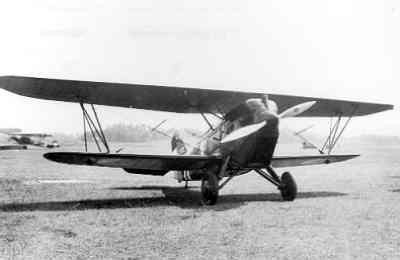
[Enclosed photo from BeeldBank NIMH. Click on photo for ordering information]

[Enclosed photo from BeeldBank NIMH. Click on photo for ordering information]
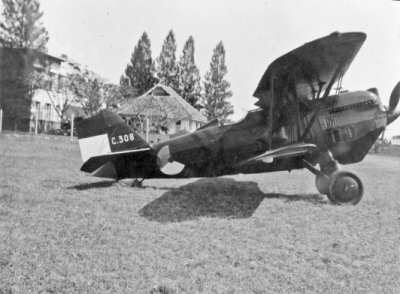
[Enclosed photo from BeeldBank NIMH. Click on photo for ordering information]
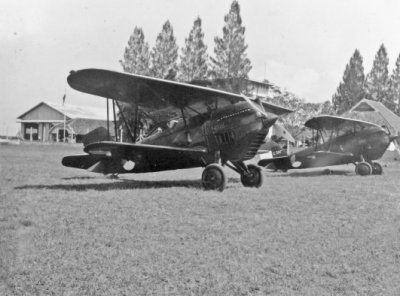
[Enclosed photo from BeeldBank NIMH. Click on photo for ordering information]
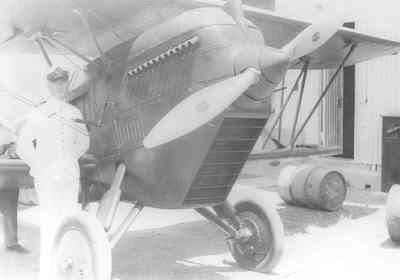
[Enclosed photo from BeeldBank NIMH. Click on photo for ordering information]
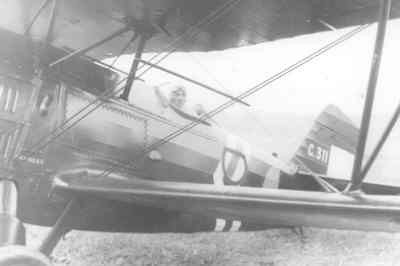
[Enclosed photo from BeeldBank NIMH. Click on photo for ordering information]
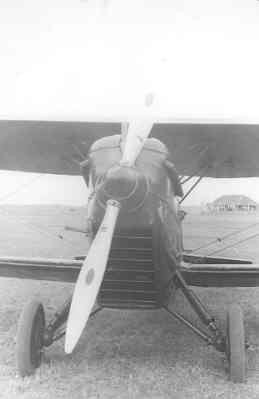
[Enclosed photo from BeeldBank NIMH. Click on photo for ordering information]
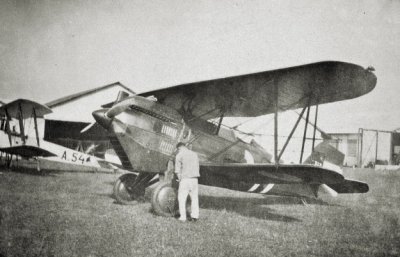
[Enclosed photo from BeeldBank NIMH. Click on photo for ordering information]
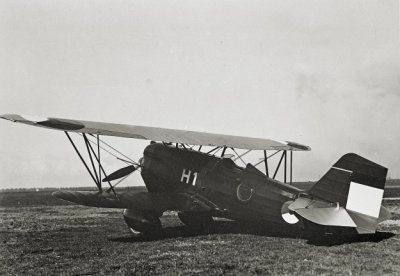
[Enclosed photo from BeeldBank NIMH. Click on photo for ordering information]
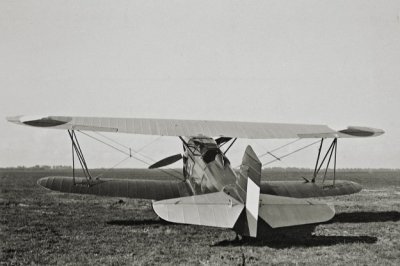
[Enclosed photo from BeeldBank NIMH. Click on photo for ordering information]
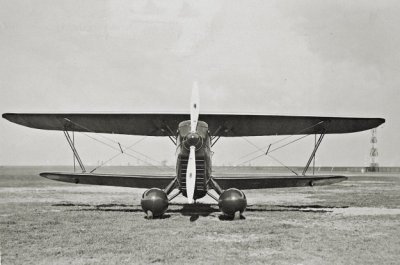
[Enclosed photo from BeeldBank NIMH. Click on photo for ordering information]
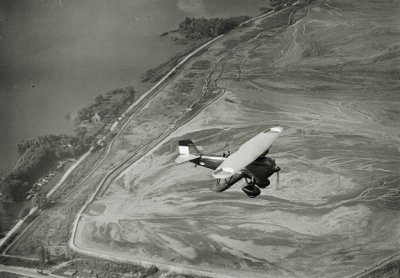
[Enclosed photo from BeeldBank NIMH. Click on photo for ordering information]
| Serial | Construction nr. | Date in service | Date out of service | Notes |
|---|---|---|---|---|
| Ordered 1929. Built and delivered by Curtiss | ||||
| C-306 | ||||
| C-307 | ||||
| C-308 | 27-02-1936 | Collided against C-3?? | ||
| C-309 | 15-02-1935 | Crashed near Tangkoebanprahoe | ||
| C-310 | ||||
| C-311 | ||||
| C-312 | 18-11-1930 | Crashed near Andir and written off. | ||
| C-313 | ||||
| C-314 | ||||
| Ordering date 1929, Build under license by Aviolanda, Papendrecht, The Netherlands | ||||
| C-315 | ||||
| C-316 | ||||
| C-317 | ||||
| C-318 | ||||
| C-319 | ||||
| C-320 | ||||
1/72nd Scale
Of the Curtiss Hawk I thus far no model has been released. Below an overview of related Curtiss types.
The Hawk of the NEIAF was an export version of the Curtiss Hawk (certainly it wasn't a Curtiss P.6E, which was released later!!) with a conversion of the engine cowling. The nose section was quite similar to that of the Curtiss P.1C.
- ArdPol
- Kit 72-042: Curtiss A-3B Falcon
- LF Models
- Kit 72065: Curtiss P-1C
- Monogram
- Kit 6794-0108: Curtiss P-6E Hawk
- Pro Resins
- Kit R72-023: A resin model of a Curtiss P-2 Hawk
- Kit R72-021: A resin model of a Curtiss P-1B Hawk
- Kit R72-001: A resin model of a Curtiss P-1 Hawk
- Kit R72-004: A resin model of a Curtiss P-1A hawk
Modelling add-on
- --
- Set --: --
Decals
- --
- Set --: --
1/48th Scale
Kits
- --
- Kit --: --
Modelling add-on
- --
- Set --: --
Decals
- --
- Set --: --
| Scheme | Colour name | FS number | BS-nummer | Humbrol | WEM | Vallejo Model Color | Vallejo Model Air | |
|---|---|---|---|---|---|---|---|---|
| Standard #1 | Fuselage | Khaki | LVA Olive green AC D04 | 70.921 | ||||
| Upper-side wings etc. | Aluminium dope | ~7178 | 191 | 70.864 | 71.062 | |||
Check www.paint4models.com for an extensive conversion table with lots of colour and paint systems.
Literature.
| Militaire Luchtvaart in Nederlandsch-Indië in beeld. Deel 1 | Hugo Hooftman | Pag. 90 - 103 | 1978 | Uitgever Europese Bibliotheek, Zaltbommel |
| Air Enthusiast 26: The famed Curtiss Hawks | Peter M. Bower | Pag. 54 - 71 | 1984 | Uitgever Pilot Press Ltd., Bromley, Kent |
| Nederlandse vliegtuigen naar buitenlands ontwerp | Theo Wesselink & Thijs Postma | pag. 41 | 1984 | Uitgever Romen Luchtvaart, Haarlem |
| 40 Jaar luchtvaart in Indië | Gerard Casius & Thijs Postma | pag. 34, 49 | 1986 | Uitgeverij De Alk, Alkmaar |
| Van Aviolanda tot Fokker | P. van Wijngaarden | pag. 37 - 39 | 1987 | Uitgever De Klaroen, Alblasserdam |
| Camouflage en Kentekens | J.Greuter e.a. | 1997 | Bonneville – Bergen (NH) |
Websites.
Special thanks to G. Casius for the very useful information and drawings regarding the Curtiss Hawk I he was so kind to sent me.
H. Berfelo for providing me with some additional information.
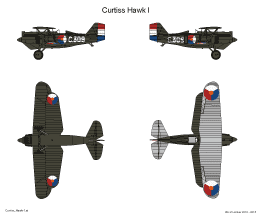
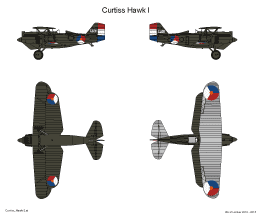
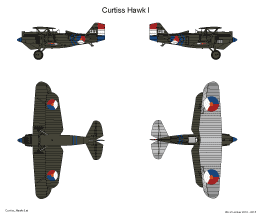
 Nederlands (nl-NL)
Nederlands (nl-NL)  English (United Kingdom)
English (United Kingdom)